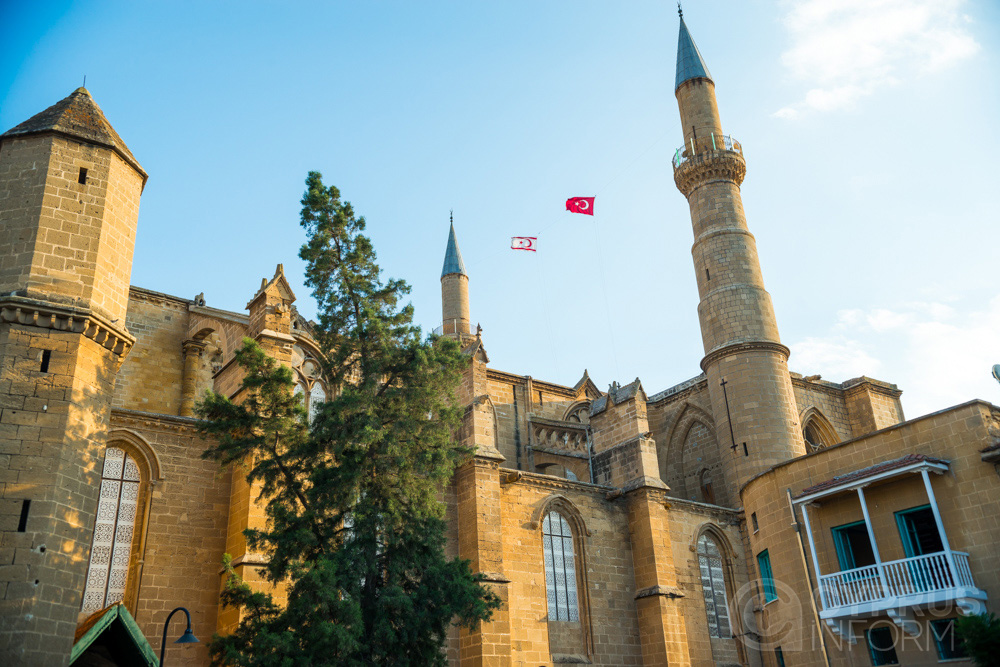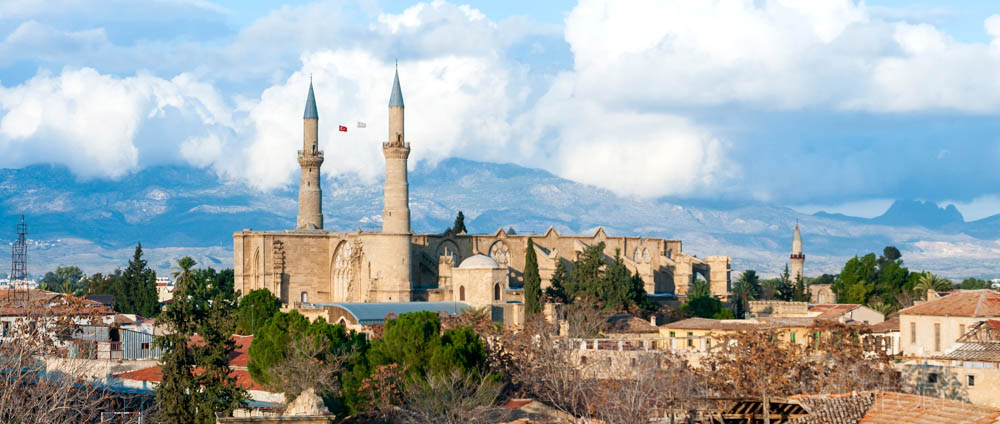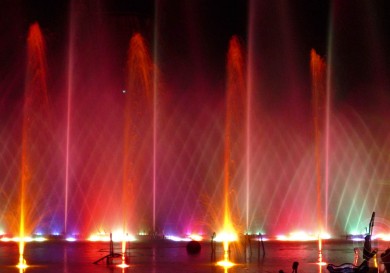It is a majestic building with two minarets that can be seen at the entrance to Nicosia, the capital of Cyprus – more precisely, in the northern part of the island, in Lefkosia. Historically, the fate of this building is very interesting.
The mere fact that it has survived and its size and structure still amazes us to this day, tells us a lot about the architects and builders who created it.
After the military conflict in 1974, when Cyprus was divided into two parts, Saint Sophia (renamed Selimiye Mosque) was taken over by the occupied northern part of Cyprus, and since 1975 has been the main place of worship for Muslims.
The history of the cathedral in Nicosia
 Saint Sophia (Agia Sofia) is one of the most beautiful and impressive historical monuments in Cyprus, with its architectural style resembling French medieval cathedrals.
Saint Sophia (Agia Sofia) is one of the most beautiful and impressive historical monuments in Cyprus, with its architectural style resembling French medieval cathedrals.
By today’s standards, the construction of this cathedral can be called ‘protracted’. The first stone was laid in 1209 by the Catholic Bishop, Thierry, and it was consecrated in 1326 while still incomplete.
The ruling Kings of the time wanted the cathedral to resemble the Notre Dame in Paris and so French masons were used to help the local Cypriot architects and builders.
It was such an ambitious project that the Pope gave a 100 day period of indulgence for those working on the cathedral in an effort to finish construction
 Description of Saint Sophia in Cyprus
Description of Saint Sophia in Cyprus
It was in this Cathedral that the Lusignan monarchs were crowned as Kings of Cyprus before they had a second coronation, and it continued to be used as a church until Ottoman conquerors arrived on the island in 1571 when it was converted into a mosque.
It was severely damaged by earthquakes, and the Ottomans erased all offending signs of Christianity, removing sculptures, smashing windows and destroying the nave.
A statue of St. Sofia was moved outside, where it has guarded the cathedral through the centuries.
Some architectural changes were also made with the addition of two minarets, and Saint Sophia became known as Selimiye Mosque in honour of Sultan Selim II, but despite all this, the European Gothic style of the building is still clearly evident.
Temple architecture
The grandeur of this building is amazing thanks to:
- great high arches;
 columns, stretching skyward;
columns, stretching skyward;- fancy cut stone;
- painted bas-reliefs;
- shutters and balconies (in the spirit of old Europe);
- stunning, beautiful window design;
- the arbor;
- marble floors and stools
- mosaic domes.
The tall entrance with fine carvings indicates the European origin of the building. A large number of windows are to the west and at the entrance to Nicosia, or by the checkpoint, it is impossible not to notice the two towering minarets.
Saint Sophia Cathedral – Selimiye Mosque – is the largest religious building in Cyprus, and can accommodate approximately 2.5 thousand people.
Up until 1959 the muezzin climbed the 170 steps, five times a day, to call the faithful to prayer. Today, there is only audio broadcast over the loudspeaker.
Excursions to Saint Sophia
 There are guided tours available to the Selimiye Mosque (formerly the Cathedral of Saint Sophia), where you can see many medieval tombstones and learn about the antiques, jewelry and decoration of the church.
There are guided tours available to the Selimiye Mosque (formerly the Cathedral of Saint Sophia), where you can see many medieval tombstones and learn about the antiques, jewelry and decoration of the church.
At the entrance you must remove your shoes, and women must be modestly dressed and cover their hair. Beautiful silk carpets, cool stone and silence will welcome you and allow you to enjoy your tour of the Selimiye mosque.
Free admission.
At the mosque there is also:
- a hospital;
- a school;
- a library;
- a trainingcentre;
- shops.
Where is Saint Sophia or Selimiye Mosque?
The Saint Sophia Cathedral is located in the north part of Nicosia. You can walk there from South part of Nicosia, just simply crossing the border via Ledra Street border crossings.













